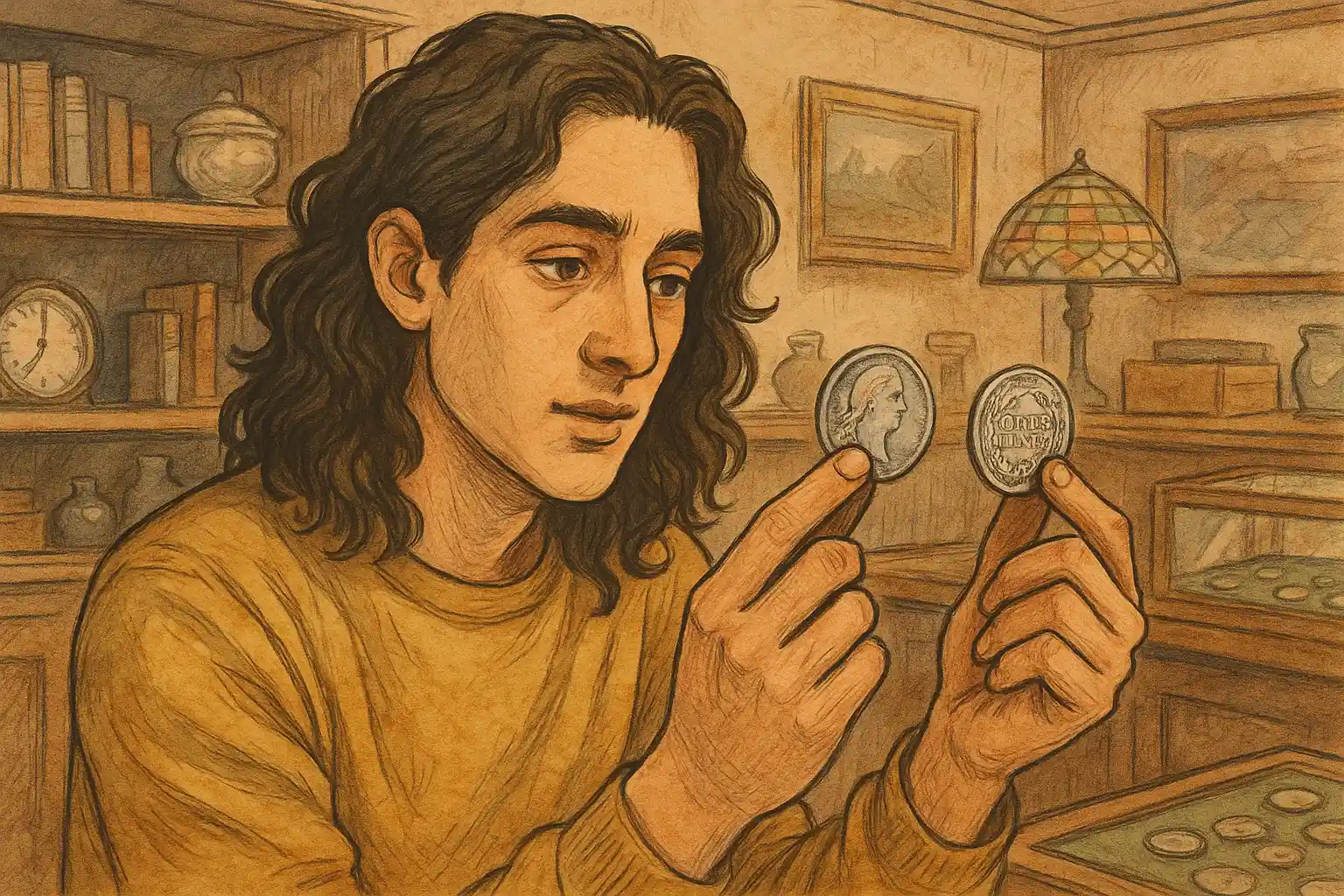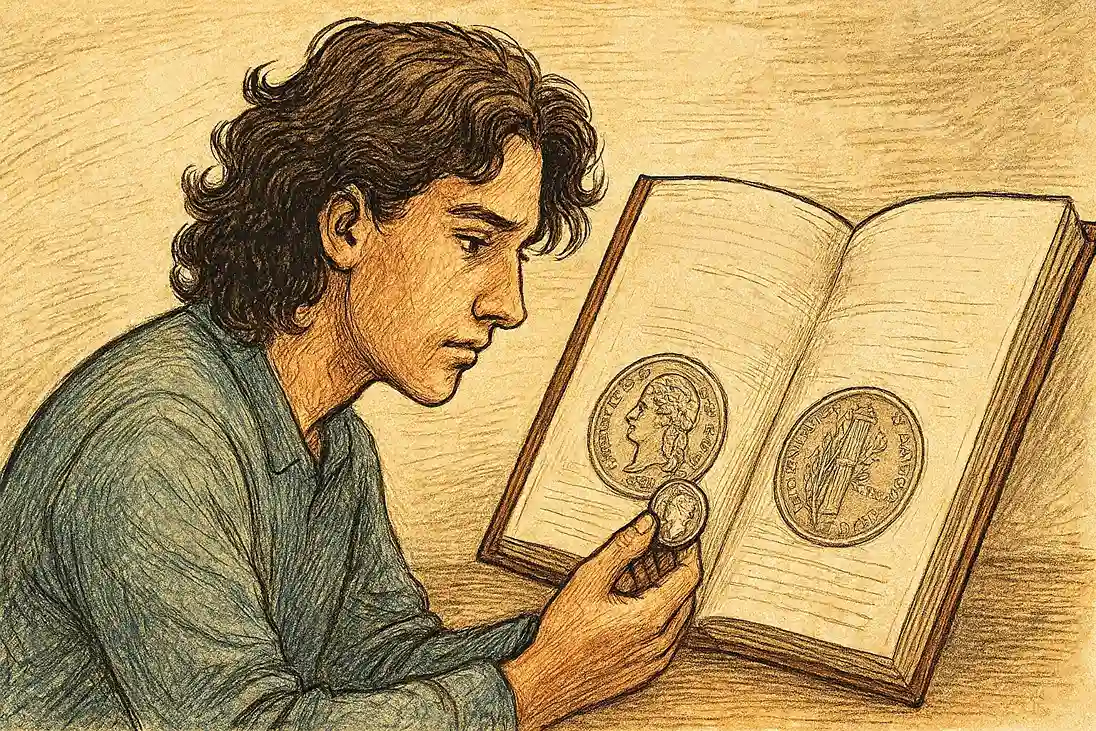Most people think of how much is a dime as only ten cents—small, light, and barely worth noticing. But in the world of numismatics, some dimes hold values that can soar into the thousands—or even millions—of dollars. These little coins can carry immense historical, cultural, and financial significance, turning a piece of pocket change into a collector’s dream.
The fascination with valuable dimes isn’t just about the silver they contain. Sure, dimes minted before 1965 are made of 90% silver, giving them an intrinsic bullion value, but for serious collectors, the real magic lies in their rarity, condition, and backstory. A single error, an unusual mint mark, or a limited mintage can transform an ordinary coin into a legendary one.

What Makes a Dime Worth Thousands?
Several factors influence whether a dime is worth far more than its face value:
Rarity – The fewer examples of a coin in existence, the higher the demand among collectors. Some dimes were minted in extremely small numbers due to production changes, accidents, or economic conditions.
Condition (Grade) – Coins are graded on a scale from Poor (P-1) to Mint State (MS-70). High-grade examples of rare dimes can be exponentially more valuable.
Mint Marks – A small letter indicating where the coin was struck can make a huge difference. Certain mint locations, such as Carson City (CC) or San Francisco (S), produced fewer coins, increasing scarcity.
Historical Significance – Coins minted during pivotal moments in U.S. history often carry extra value due to their connection to major events.
Errors and Varieties – Double strikes, overdates, and misaligned dies create unique coins that collectors love to hunt.
When all these factors align, the result can be a coin that sells for hundreds of thousands of dollars—or more—at auction.
The Allure of Pre-1965 Silver Dimes
For newer collectors, an easy starting point is silver content. Any U.S. dime struck before 1965 contains 90% silver, weighing about 2.5 grams. Even in worn condition, these coins are worth more than face value because of the silver market price. But while melt value might be just a few dollars, some of these older dimes can carry far greater numismatic value if they meet rarity or condition criteria.
The combination of precious metal content and historical intrigue makes these coins particularly appealing. And if you’re lucky enough to spot one of the rare dates or error varieties in your change—or tucked away in an old coin jar—you might just be holding a small fortune in your hand.
Top Expensive Dimes That Can Make You Rich Today
While thousands of different dimes have been minted in the United States since 1796, only a select few have achieved legendary status in the collecting world. These coins combine rarity, history, and desirability to command staggering prices at auction. Here are some of the most remarkable examples:
Dime | Notable Features | Estimated Value (High Grade) |
1894-S Barber Dime | Only 24 struck at the San Francisco Mint; 9 known to survive | Up to $2.5 million |
1873 Seated Liberty Dime (CC, No Arrows) | Carson City issue without arrows on date; extremely limited mintage | Around $2.4 million |
1796 Draped Bust Dime | First dime issued by the U.S. Mint; small eagle reverse design | Over $1 million |
1916-D Mercury Dime | First Denver Mint Mercury dime; mintage just 264,000 | Up to $1.5 million |
1874-CC Liberty Seated Dime | Carson City rarity with low survival rate | Around $190,000 |
1942/41 Mercury Dime Overdate | Overlapping years caused by die misalignment | Up to $100,000 |
1. 1894-S Barber Dime
The crown jewel of U.S. dime collecting, the 1894-S Barber Dime is surrounded by mystery. Only 24 pieces were struck, possibly as gifts or to balance mint accounting records. Today, just nine are confirmed to exist, and whenever one appears at auction, it becomes headline news—often selling for millions.
2. 1873 Seated Liberty Dime (Carson City, No Arrows)
Carson City Mint coins already carry a strong collector following, but the 1873 “No Arrows” version is in a class of its own. These coins were recalled and melted shortly after release due to a weight standard change, making surviving examples nearly impossible to find.
3. 1796 Draped Bust Dime
This was America’s very first dime, produced when the nation was still in its infancy. With its small eagle reverse and historic 18th-century design, the 1796 Draped Bust Dime appeals to both history buffs and serious investors, often selling for well over a million dollars in pristine condition.
4. 1916-D Mercury Dime
The Denver Mint’s first year producing the Mercury dime series came with a remarkably low mintage—just 264,000 pieces. As a result, the 1916-D is one of the most coveted 20th-century U.S. coins, with top-condition examples fetching more than a million.
5. 1874-CC Liberty Seated Dime
Another Carson City rarity, the 1874-CC saw extremely limited production and few survivors. High-grade specimens can sell for close to $200,000, especially if they have sharp strikes and minimal wear.
6. 1942/41 Mercury Dime Overdate Error
A fascinating minting mistake, this coin shows elements of both 1941 and 1942 in its date due to an overpunched die. Collectors prize these errors for their uniqueness, and depending on grade, they can be worth tens of thousands of dollars.
How to Identify and Protect Valuable Dimes
Finding one of these rare dimes in your change jar or inherited coin collection is exciting—but proper identification and handling are essential if you want to preserve its value.

Steps to Spot a High-Value Dime
Check the Date and Mint Mark – Use a magnifying glass to inspect both the year and the small letter indicating where it was minted. Rare combinations, such as “1916-D” or “1873-CC,” can signal big value.
Look for Unique Features or Errors – Overdates, doubled lettering, or unusual die marks can make a dime rare even if the date is common.
Assess the Condition – The fewer scratches, nicks, and wear marks, the higher the potential grade. Professional grading by PCGS or NGC can confirm authenticity and value.
Research Auction Results – Checking past sales gives you a realistic idea of what collectors have paid for similar coins.
Storing Your Dimes Safely
Rare coins should be kept away from moisture, heat, and direct handling. Use:
Acid-free holders or slabbed cases for long-term storage
A climate-controlled safe for protection against environmental damage
Avoid cleaning coins, as even gentle polishing can destroy value
Using Technology to Help — Coin ID Scanner App
Modern collectors have a powerful ally in the Coin ID Scanner app, available for Android and iOS. With it, you can:
Identify a Coin by Photo – Snap a picture and instantly see minting years, origin, metal composition, diameter, weight, and estimated price
Manage a Digital Collection – Keep track of all your coins in one organized space
Access a Massive Database – Explore over 187,000 coins from around the world
Get AI-Assisted Insights – Learn about history, rarity, and potential value instantly
This tool is especially useful for spotting rare dimes before you accidentally spend or mishandle them.
Small Coins, Big Fortunes
Rare dimes prove that size doesn’t determine worth—a ten-cent coin can be worth more than a luxury car or even a house. By learning what to look for, handling coins with care, and using smart tools like the Coin ID Scanner, you can turn pocket change into a prized investment.
Whether you’re chasing a multimillion-dollar 1894-S Barber Dime or simply curious about the silver content of pre-1965 issues, the world of valuable dimes offers both thrilling discoveries and rich history—right in the palm of your hand.
